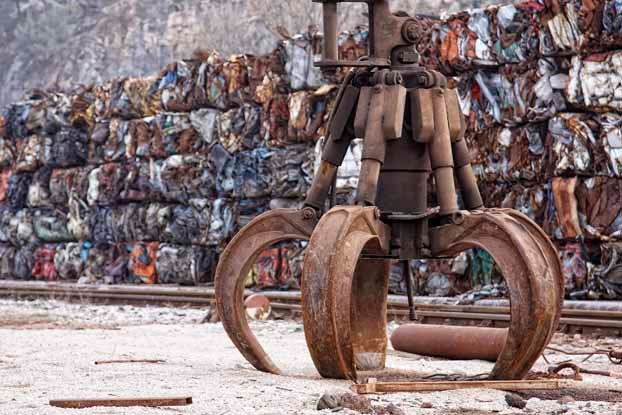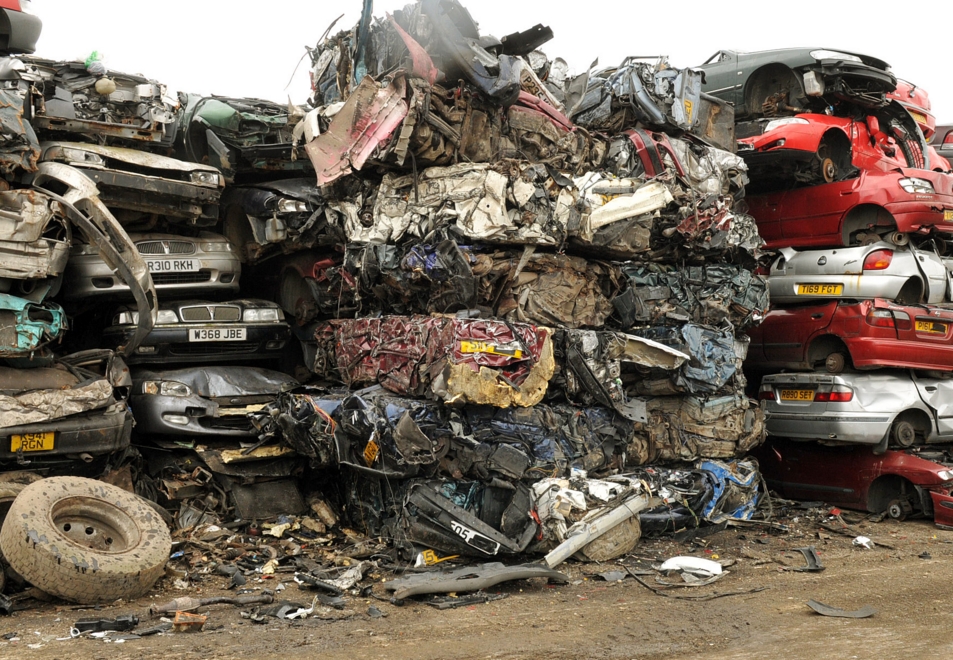Constant price fluctuations are characteristic of metal scrap market, as scrap metal prices depend on a number of factors. The main and the most significant of them, such as metal prices and demand-supply ratio wasn't favorable for the industry and caused plummeting of metal scrap prices worldwide. In 2015 metal scrap prices reached their 6-year lowest level. How much longer will the prices be that low and what price situation is forecasted for metal commodities for 2016?
2015 metal scrap prices decline
After the global economic crisis in 2008 metal prices and prices on scrap metals have been relatively stable, with habitual moderate price fluctuations. But in the late 2014 the situation changed and prices for all metal commodities went down. There are several factors, which influenced this process and brought about a considerable demand-supply disbalance resulting in price plummeting.
The United Kingdom wasn't an exception. Overproduction of steel and other metals led to demand decline. But the most considerable role here played import metals. Great volumes of China's metal commodities on the international market and imports to Britain brought about deteriorating consequences for Britain's metal industry. The problem is that China produced metal commodities in enormous quantities not responding to their home demand at all. But in the same time they didn't want to cut metal production, so that to keep people employed. In addition, China has no strict energy policies and, thus, metal plants have an access to cheap energy and have an opportunity to produce metal on relatively low cost. In contrast, energy tariffs in Britain are one of the highest in the world and prime cost of metal production is also higher. Consequently, British production could not compete with cheap imports.

In 2015 metal prices continued to plummet, which couldn't but influence metal scrap industry as too. Scrap prices reached the lowest figures in 6-year period and so far seem to fall even more.
Ferrous metal sector seems to suffer the most. Steel industry in the United Kingdom is experiencing not its best times, suffering loses and confronting the question of closures of the biggest smelters. In the same time, non-ferrous metals are also in decline. Aluminum scrap prices have fallen more than by 25% since last September. The situation with copper and brass is quite similar, whereas prices for some rare metal scrap declined even more considerably: zinc prices scaled down by 31.9% and nickel by about 33% in 6-mounths period. However, non-ferrous metal scrap is more promising in terms of price recovery. In the late December we observed a slight jump in copper and aluminum prices, which is better than another downturn but too little to make any anticipating price forecasts.
Low metal price aftermaths
Current metal prices had considerably influenced metal industry in the United Kingdom. Most of the smelting plants and other metal enterprises are currently experiencing deep crisis and suffering loses. The demand for metal commodities will stabilize as soon as there is no oversupply in the country. But neither China reduces their import of cheap metals into the country, nor domestic manufacturers are willing to cut the volumes of production, explaining that they would better suffer loses than stop smelting process as it is very difficult to restart. In such situation metal industry in the United Kingdom needs some backing measures to be undertaken so that to support a number of companies and prevent the industry from large-scale closures.
Companies dealing with metal scrap, scrapyards and recyclers, especially small ones are also seem to be in plight.

The scrap prices are so low, that it became unprofitable to recycle at all. People who earn their living trading scrap are used to ups and downs, but this time the decline period has been lasting for too long. Many scrap collectors stock scrap waiting for the prices to go up, but they say that current crisis has been unfolding for too long and most of them simply ran out of money to do so and are forced to bring their scrap in the market. Large scrap yards and recyclers, which have operation big enough to resist the crisis, are forced to downsize the personnel. For majority of small enterprises and individual collectors this situation appeared to be too difficult to continue business operations.
But on the other hand, there is a silver lining to the drop in metal scrap prices.

Metal theft at scrapyards, which for many companies was a real disaster and often led to huge loses, scaled down considerably as of the present time. The reason is understandable: nobody wants to buy scrap and those who do pay too little.
What to expect from scrap metal prices?
As of today, metal and scrap industry seems to have reached the end of a major growth cycle and, thus, the prices are unlikely to fall further. Admittedly, they will improve when the demand for metal commodities reaches the previous levels and there is no oversupply of China's import. New governmental plan on supporting metal industry in Britain may also influence the big picture positively. The early figures of 2016 bring some hope, suggesting stable steel prices and a slight improvement for non-ferrous metals. But it is too early to anticipate any considerable improvement anytime soon, as the prices have been in decline for too long, so time is required to recover metal industry. Let's hope for the best but prepare for the worst.
